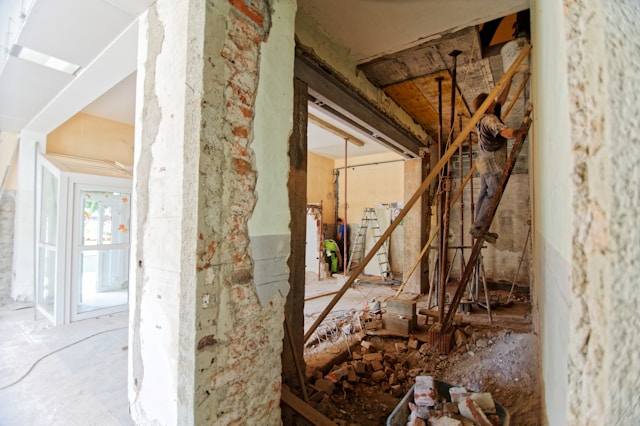Home renovations can breathe new life into a property, enhance its value, and improve day-to-day comfort. Whether you’re updating your kitchen, expanding your living space, or refreshing your home’s look, renovations are a smart investment. However, without proper planning, they can also become a serious financial burden. Knowing how to finance a home renovation without going broke is essential to avoid long-term debt and money stress. In this guide, we’ll walk you through smart budgeting, funding strategies, and practical tips to keep your renovation on track and within your means.
Set a Realistic Renovation Budget
Before you start choosing tile colors or tearing down walls, the first step is setting a realistic budget. Your budget should reflect what you can comfortably afford, not just what you want to spend.
Start by listing every component of the renovation, including materials, labor, permits, and unexpected costs. Always include a contingency fund typically 10% to 20% of the total project cost for unforeseen issues like hidden water damage or material price increases.
It’s important to separate your renovation needs from your wants. Focus on structural repairs, efficiency upgrades, or functional improvements first, then explore aesthetic changes if your budget allows. A well-planned budget lays the foundation for a financially sustainable renovation.
Explore Your Financing Options
When savings fall short, financing becomes the go-to strategy. Understanding the different ways to finance a home renovation will help you make the right choice for your budget and project size.
Home Equity Loan
This option allows you to borrow a lump sum based on the equity in your home. It comes with a fixed interest rate and predictable payments, making it suitable for large, one-time renovations.
Home Equity Line of Credit (HELOC)
A HELOC provides a revolving line of credit that you can draw from as needed, with variable interest rates. It’s ideal for phased or ongoing renovations where expenses may vary over time.
Personal Loans
Unsecured personal loans are easy to obtain and don’t require home equity, but they tend to have higher interest rates. They work best for smaller projects or when you need funds quickly.
Credit Cards
Using credit cards can be risky due to high interest, but if you can pay them off quickly—or use a card with a 0% introductory APR this may work for minor upgrades or emergency expenses.
Cash-Out Refinance
This option replaces your existing mortgage with a larger one, letting you use the difference for renovations. While it can offer a lower rate, you’ll restart your mortgage term, so consider this carefully.
Government Loans and Grants
Programs like the FHA 203(k) loan allow homeowners to finance both the purchase and renovation of a home. There are also energy-efficient improvement loans and local grants that support specific renovation goals.
Understanding these options can help you choose the most affordable and flexible way to fund your renovation.
Use Savings Wisely
Using personal savings is one of the most cost-effective ways to fund a renovation. You avoid paying interest and fees, and it gives you more control over spending. However, it’s important not to drain your emergency fund or compromise your financial stability.
If possible, consider covering part of the renovation with savings and financing the rest. This strategy can reduce your loan amount and interest payments while preserving your cash buffer for unexpected life events.
Plan Your Renovation in Phases
You don’t have to renovate everything at once. Breaking your project into manageable phases can ease financial pressure and improve cash flow. For instance, focus on the kitchen this year and the bathroom next year.
Phased renovations allow you to pay for each portion as you go, giving you time to save, shop around, and recover financially between stages. It also lets you reevaluate priorities and adjust your plans based on experience and results.
Get Multiple Bids and Negotiate
Never settle for the first quote. Getting at least three estimates from licensed contractors helps you understand the market rate and choose the best value. Be sure to compare what each estimate includes some contractors may omit permits or cleanup fees, which can lead to surprises later.
Don’t be afraid to negotiate. Ask if there are less expensive material options, off-season discounts, or payment plan options. Often, contractors are willing to work within your budget if you’re clear and reasonable about expectations.
Save with DIY and Smart Shopping
One way to renovate without going broke is to do some of the work yourself. Even if you’re not a professional, there are many tasks you can safely take on:
-
Demolition
-
Installing shelves or hardware
-
Landscaping
Every task you complete yourself reduces labor costs. You can also save money by sourcing materials strategically. Look for sales at local hardware stores, browse surplus or salvage shops, and use cashback or rewards credit cards when purchasing supplies. Additionally, reuse and recycle where you can—refurbishing cabinets or refinishing furniture can dramatically cut costs.
Avoid Common Financial Pitfalls
Renovations often go over budget due to poor planning or lack of discipline. To renovate smart, avoid these common mistakes:
-
Scope creep: Stick to your original plan to prevent ballooning costs.
-
Over-improving: Don’t invest more than the neighborhood average unless it’s your forever home.
-
No emergency buffer: Always set aside funds for unplanned expenses.
-
Borrowing beyond your means: Keep your debt load manageable and don’t max out credit lines.
Discipline and awareness are crucial. Track your spending and be willing to compromise if needed.
Conclusion
Renovating your home can be an exciting and rewarding experience, if it’s approached with a smart financial strategy. By setting a realistic budget, exploring the best home renovation loans, using savings wisely, and planning in phases, you can enhance your home without draining your bank account.










